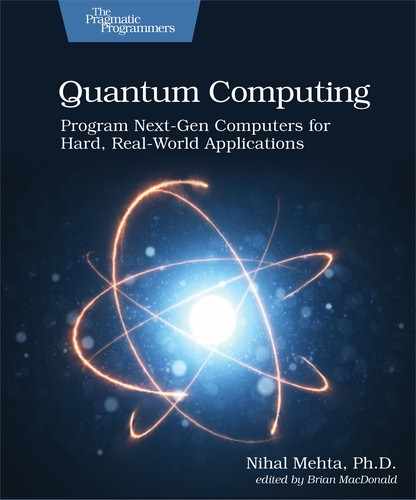[Quantum entanglement] is the characteristic trait of quantum mechanics, the one that enforces its departure from classical lines of thought.
Chapter
5
Beam Me Up, Scotty—Quantum Tagging and Entangling
The ability of quantum gates to act on the entire solution space at once offers a spectacular way to tackle some of today’s most complex problems. But for quantum computing to live up to its billing, we need a way to tease out the optimal solution efficiently, as opposed to grinding through all the possible solutions as a classical computer would do.
In this chapter, you’ll see that the mega-qubit isn’t just a nifty bookkeeping device to track how gates affect all possible states at the same time. It underpins a central tenet of quantum mechanics that makes a quantum computer not just another hyper-fast computer but one that solves problems in ways that can’t be duplicated on classical computers. With the mega-qubit, you’ll learn new ways to cancel qubelets and command qubits to quantum states in a controlled and disciplined manner. We’ll also see that the underlying quantum physics requires us to design our quantum circuits in a specific way, otherwise the qubits get “locked” in suboptimal quantum states and can’t be freely manipulated. By the end of this chapter, you’ll understand the core premise of quantum computing and glimpse the levers that collapse qubits to the optimal solution.
